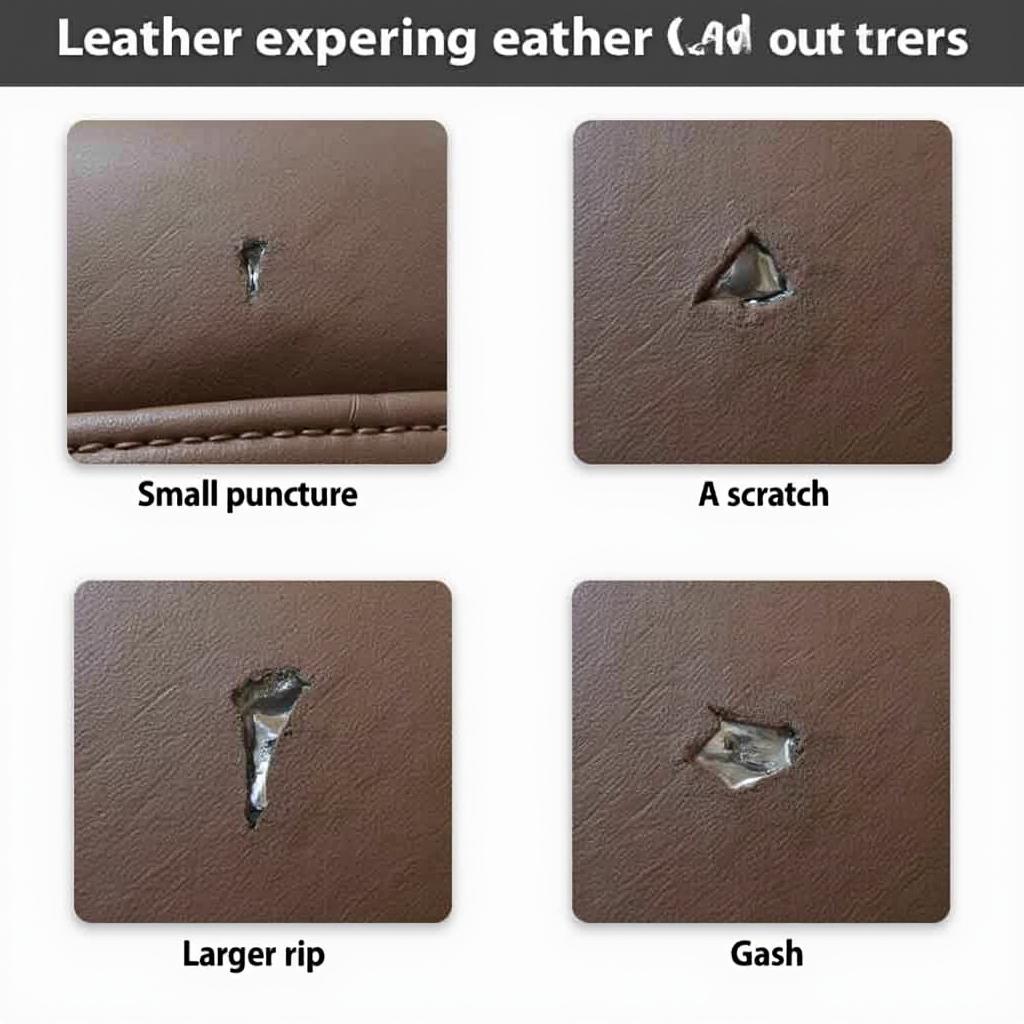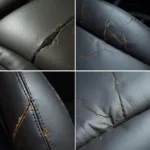Tears in your leather car seats can be frustrating, detracting from the overall look and value of your vehicle. But before you despair, there’s good news! In many cases, tears in leather car seats can be repaired, restoring their appearance and preventing further damage.
Understanding Leather Car Seat Tears
Before diving into repair options, it’s important to understand the nature of the tear and the type of leather in your car.
- Types of Tears: Tears can range from small punctures and scratches to larger rips and gashes. The severity of the damage will impact the repair approach.
- Leather Grades: Car seats are typically upholstered with different grades of leather, each with varying durability and repair considerations. Common types include:
- Full-grain leather: The highest quality, most durable, and easiest to repair.
- Top-grain leather: Slightly less durable than full-grain, but still repairable.
- Genuine leather: More prone to damage and may require specialized repair techniques.
- Synthetic leather (Leatherette): Repairing synthetic leather can be more challenging and may require professional intervention.
DIY vs. Professional Leather Car Seat Repair
Deciding whether to tackle a leather car seat tear yourself or call in a professional depends on several factors:
DIY Repair:
- Suitable for: Small tears, punctures, scratches.
- Pros: Cost-effective, can be done with readily available materials.
- Cons: May not be effective for larger tears, risk of further damage if not done correctly.
Professional Repair:
- Suitable for: Larger tears, rips, gashes, damage to high-end leather.
- Pros: Expertise ensures a high-quality, long-lasting repair, can address complex damage.
- Cons: More expensive than DIY.
How to Repair Minor Leather Car Seat Tears
For minor tears, punctures, and scratches, you can often achieve satisfactory results with a DIY approach. Here’s what you’ll need:
- Leather Repair Kit: These kits are widely available and contain everything needed for basic repairs, including a color matching guide, filler compound, adhesive, and application tools.
- Clean Cloth: Use a soft, lint-free cloth for cleaning and applying products.
Steps:
- Clean the Area: Thoroughly clean the damaged area and surrounding leather with a leather cleaner or mild soap and water. Allow it to dry completely.
- Prepare the Tear: If the tear has loose edges, carefully trim them with small scissors.
- Apply Filler Compound: Using the provided applicator, carefully fill the tear with the leather filler compound, ensuring a smooth and even surface.
- Allow to Dry: Let the filler compound dry completely as per the kit’s instructions.
- Sand and Blend: Once dry, gently sand the repaired area with fine-grit sandpaper until it’s flush with the surrounding leather.
- Apply Leather Dye (If Necessary): If the repair kit includes leather dye, use the color-matching guide to select the closest match to your car’s leather. Apply the dye sparingly to the repaired area, blending it outwards for a seamless look.
When to Consult a Professional
For larger tears, rips, or damage to high-end leather, it’s best to consult a professional leather repair specialist. They have the expertise, tools, and materials to address complex repairs and ensure a seamless and long-lasting result.
Tips for Preventing Leather Car Seat Tears
- Regular Cleaning and Conditioning: Keep your leather seats clean and conditioned to prevent drying, cracking, and becoming more susceptible to tears.
- Use Seat Covers: Consider using seat covers, especially if you frequently transport pets, children, or heavy items.
- Avoid Sharp Objects: Be mindful of sharp objects that could scratch or puncture the leather.
- Address Damage Promptly: Small tears and punctures are easier to repair than larger ones. Don’t delay in addressing any damage.
Conclusion
While tears in leather car seats can be an unwelcome sight, they don’t have to be a permanent problem. By understanding the repair options available and taking preventative measures, you can keep your car’s interior looking its best for years to come.
FAQs
Q: Can I use superglue to fix a tear in my leather car seat?
A: It’s not recommended to use superglue on leather car seats. Superglue can create a rigid bond that doesn’t flex with the leather, leading to further cracking and damage.
Q: How much does professional leather car seat repair cost?
A: The cost of professional repair varies depending on the severity of the damage, the type of leather, and the location. It’s best to get a quote from a reputable leather repair specialist.
Q: Can I prevent future tears after a repair?
A: While you can’t completely eliminate the risk of future tears, proper care and maintenance, along with preventative measures like seat covers, can significantly reduce the likelihood.
Q: How long does a DIY leather repair last?
A: The longevity of a DIY repair depends on the quality of the repair kit used, the severity of the damage, and how well the repair is maintained.
Have other questions about car maintenance or need help with a tricky repair? Contact us on WhatsApp at +1(641)206-8880 or email us at [email protected]. Our team of car care experts is available 24/7 to assist you. You can also find more helpful articles and resources on our website, CarRepairOnline.



